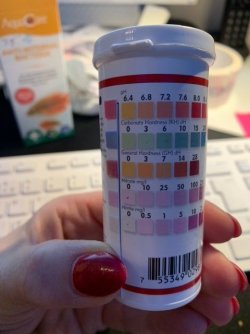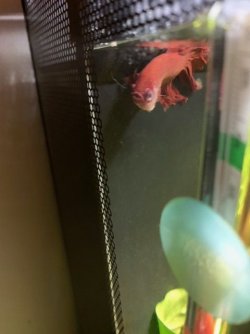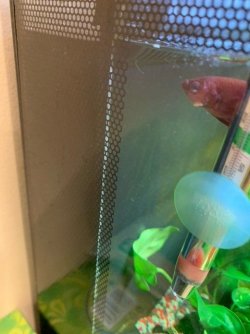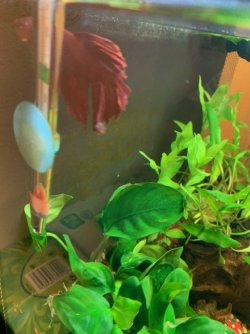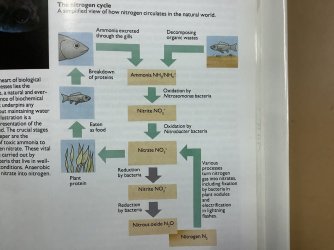BellaBoo15
New Member
Hi
I am hoping someone can help please with our Betta
Tank size: 34L
tank age: 1 Year
pH: 7.6
ammonia:
nitrite: 10
nitrate: 0
kH: 20
gH: 14
tank temp: 74
Fish Symptoms (include full description including lesion, color, location, fish behavior):
Very lethargic - staying at the top of the tank or hiding at the the bottom. Noticed approx 5 days ago what looked liked white fluff on side of face which is now, as of this morning, also on his tail. I have taken a water sample to the local fish shop recently who advise water quality is good and they advised to treat water with Tonic salt 3g per litre and Aquacare anti internal bacteria every other day for 4 doses
This was on Friday
He isn't eating and really does not seem happy - now with the addition of the area on his tail - he seems to be getting worse
Volume and Frequency of water changes:
Bi weekly approx 8litres
Chemical Additives or Media in your tank:
Recently the addition of the tonic salt and anti internal bacteria
Tank inhabitants:
Just Rosey (the Betta) and 6 neon's who are in good health
Recent additions to your tank (living or decoration):
None
Exposure to chemicals:
Only recently the addition of the tonic salt and anti internal bacteria
Digital photo (include if possible):
I am hoping someone can help please with our Betta
Tank size: 34L
tank age: 1 Year
pH: 7.6
ammonia:
nitrite: 10
nitrate: 0
kH: 20
gH: 14
tank temp: 74
Fish Symptoms (include full description including lesion, color, location, fish behavior):
Very lethargic - staying at the top of the tank or hiding at the the bottom. Noticed approx 5 days ago what looked liked white fluff on side of face which is now, as of this morning, also on his tail. I have taken a water sample to the local fish shop recently who advise water quality is good and they advised to treat water with Tonic salt 3g per litre and Aquacare anti internal bacteria every other day for 4 doses
This was on Friday
He isn't eating and really does not seem happy - now with the addition of the area on his tail - he seems to be getting worse
Volume and Frequency of water changes:
Bi weekly approx 8litres
Chemical Additives or Media in your tank:
Recently the addition of the tonic salt and anti internal bacteria
Tank inhabitants:
Just Rosey (the Betta) and 6 neon's who are in good health
Recent additions to your tank (living or decoration):
None
Exposure to chemicals:
Only recently the addition of the tonic salt and anti internal bacteria
Digital photo (include if possible):

